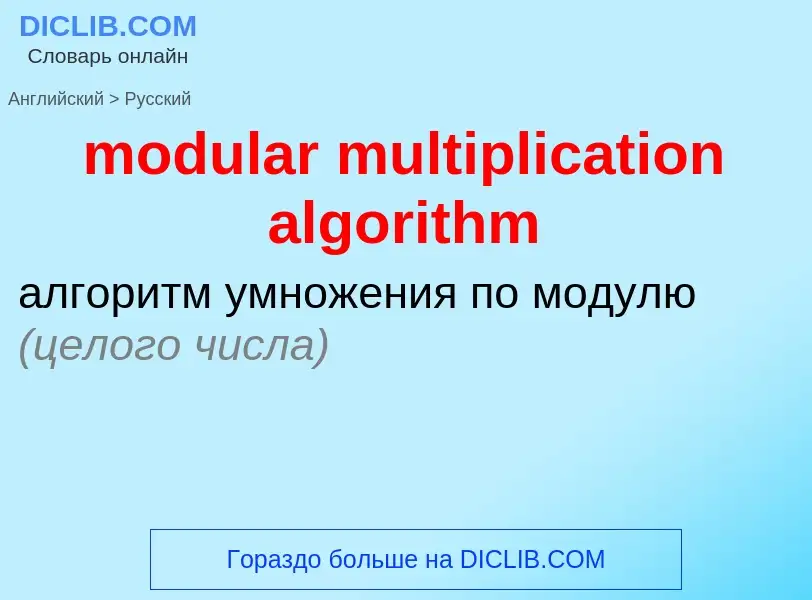Traducción y análisis de palabras por inteligencia artificial ChatGPT
En esta página puede obtener un análisis detallado de una palabra o frase, producido utilizando la mejor tecnología de inteligencia artificial hasta la fecha:
- cómo se usa la palabra
- frecuencia de uso
- se utiliza con más frecuencia en el habla oral o escrita
- opciones de traducción
- ejemplos de uso (varias frases con traducción)
- etimología
modular multiplication algorithm - traducción al ruso
математика
умножение в столбик
Wikipedia
The Karatsuba algorithm is a fast multiplication algorithm. It was discovered by Anatoly Karatsuba in 1960 and published in 1962. It is a divide-and-conquer algorithm that reduces the multiplication of two n-digit numbers to three multiplications of n/2-digit numbers and, by repeating this reduction, to at most single-digit multiplications. It is therefore asymptotically faster than the traditional algorithm, which performs single-digit products. For example, to multiply two 1024-digit numbers (n = 1024 = 210), the traditional algorithm requires (210)2 = 1,048,576 single-digit multiplications, whereas the Karatsuba algorithm requires 310 = 59,049 thus being ~17.758 times faster.
The Karatsuba algorithm was the first multiplication algorithm asymptotically faster than the quadratic "grade school" algorithm. The Toom–Cook algorithm (1963) is a faster generalization of Karatsuba's method, and the Schönhage–Strassen algorithm (1971) is even faster, for sufficiently large n.


![Alan Turing's statue at [[Bletchley Park]] Alan Turing's statue at [[Bletchley Park]]](https://commons.wikimedia.org/wiki/Special:FilePath/Alan Turing.jpg?width=200)




